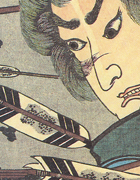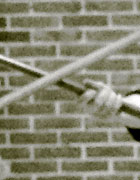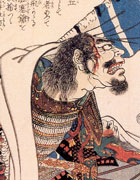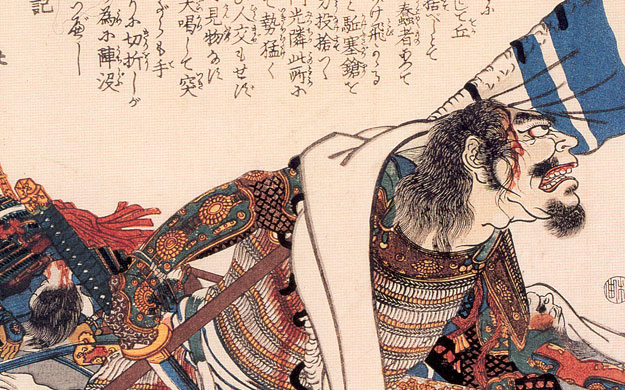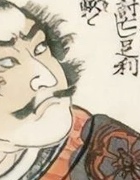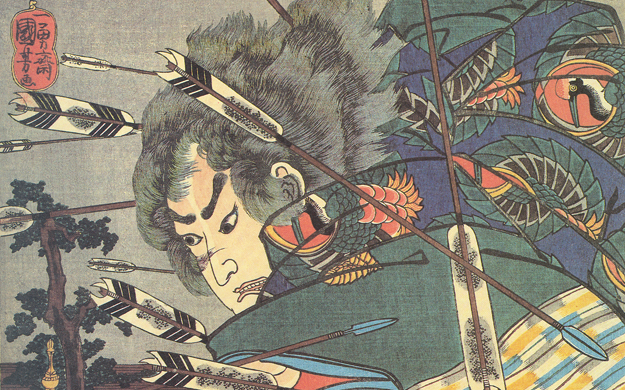
Practising Katori Shinto Ryu is
not just developing a certain proficiency with the sword and other weapons.
Katori Shinto Ryu is a way of passing on a certain tradition, a transmission
that can be traced back from individual to individual to at least 1447, the
year of the school’s foundation.
But what is it we understand by
tradition? In itself a tradition can be an empty shell: a rigid and
institutionalised form of rules of conduct that have been passed down and
along the way have become absolutised – no longer a means but an
end.
This is not the type of tradition that is interesting to us. The form in which the tradition is
continued, in this case the Ryu, is meaningful to us because it is the way for
us to pursue our goal: our further shaping and development of ourselves Ð
self-development by studying a way of being that is difficult to find in the
daily life of our (post-)modern world.
A warrior tradition teaches us
the meaning of self discipline, honour and loyalty, an open and respectful way
of dealing with each other, an appreciation for hierarchical relations where
they are functional, like on the tatami, and the meaning of the worth of every
moment in our temporary life. Studying the tradition opens to us an inner
dimension that is often lacking in a world where prosperity, convenience and
comfort seem to be the most important things to pursue. A warrior tradition
should however not be confused with a soldier tradition of absolute discipline
and obedience, as seems to happen all too often in martial arts.
It should be clear that
tradition is only continued in a valuable way if it has not has become rigid
with formal patterns. Continuation of the ryu does not happen through formal
structures, but through personal study and transfer. That is why a live ryu
not only adheres to tradition, but also dynamically transforms to adapt to
changing times, without losing the essence of its traditions.
Every teacher within the ryu
appropriates the techniques and transforms them according to his own skill,
character and physique (practicing martial arts is, after all, a dynamic
process, not an exact science), and every teacher has to be able to convey the
essences of the ryu tradition to new and changing generations. Etiquette, for
example, is one of these essences Ð not as a goal, but as a means to an end.
Martial arts start and end with
etiquette, with a way of handling oneself as well as others. From the moment
the budoka, the martial artist, enters the training room until he leaves, his
behaviour is subject to closely defined lines of conduct. Greeting politely:
the kamiza (the “highest point” of the training room, which is the place where
the psychic energy is focused), the teacher, the fellow students, the own
weapon. Wearing prescribed clothing, which is based on that of the samurai and
accentuates the difference between daily life and the training room.
Maintaining a correct posture: standing or sitting upright on the floor, in
seiza or cross-legged, which not only indicates that the old samurai did not
have chairs or benches, but also that they were prepared for battle at all
times. Never attacking someone unexpectedly, but practicing in set forms and
in a respectful way, mindful of the danger that weapons training entails.
Starting on time and not leaving the room without the teacher’s permission, so
as not to disturb the concentration of others.
Form and content reinforce each
other in this way, and are closely related, in the same way that the mental
attitude of the warrior is formed in the physical training of the art of sword
fighting, even as this mental attitude is the only thing that advances his
physical training. A living and meaningful ryu cannot exist where only the
exterior of tradition is present.
Stephen Snelders
